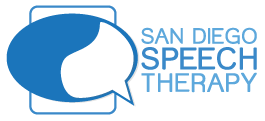Previously, we talked about the role of parents and teachers in speech language therapy. Here is a great starter list of practical tips for you to jump in and get started.
Understand your child’s speech/language goals.
Get to know developmental norms so you know what comes first, then next, then last in the hierarchy of speech/language development.
Getting on your child’s eye level when communicating (get on the floor!).
Holding objects of interest by your mouth to provide visual and vocal highlighting as you speak. Emphasize the key component, word, or sound.
Become comfortable with the techniques of modeling, repetition, recasting, expansion, methods and levels of cuing.
If your child is (pre-verbal) pre-linguistic: learn to augment speech with signing, gestures, motherese.
Learn how to read to your child based upon his/her age and speech/language “age” (there are developmentally-appropriate ways to “read” together).
Ask a lot of questions of your child’s professional. Ask till the answers make sense to you.
Limit questions with your child. Instead, label, describe and narrate. If you do use questions, be prepared to answer it yourself; then help your child to repeat the answer rather than having an open set.
Closed set: only a finite answer is possible (e.g. What is this? A book.)
Limited set: only a few answers are possible (eg. Which book do you want to read? Dr. Seuss, Sesame Street, or Eric Carle.)
Open set: any number of answers are possible (e.g. What happened to you? The adult has no idea yet, so the possible answers are many.)
Analyze the error* and determine what your child knows as well as doesn’t yet know and you help fill in the gap. We can help help you learn this critical and valuable skill.
Reduce the task or alter it and then always try again. End on a positive note, never on a “give-up”.
Make it interesting and positive in tone and affect, never punitive or critical. Never abrupt. Laughter together helps lighten the mood, then the stress dissipates which improves communication for all.
Provide playful practice, silly contrasting sounds- words- sentences- and rhymes.
*For multiple errors, analyze them all and then prioritize what to address (have your SLP help you decide):
Ways to contrast/highlight:
Repetition is a key tool!
Repeat entire phrase.
Repeat phrase or sentence in smaller segments.
Repeat the phrase, exaggerating error or missing parts (vocal highlighting).
Repeat the missing word or words.
Repeat the word the way the child said it, and then the way it should be-always in a positive manner. Let the child decide which is correct (with your guidance and praise of course).
Repeat the missing or incorrect sound or syllable.
Write the omitted sound, word or words (visual highlighting).
Show pictures representing the missing word or words.
Use pacing board technique (the professional can teach you this method).
Expand by one element.
Need Help?
[highlight_button_blue]Contact Us Today![/highlight_button_blue]

